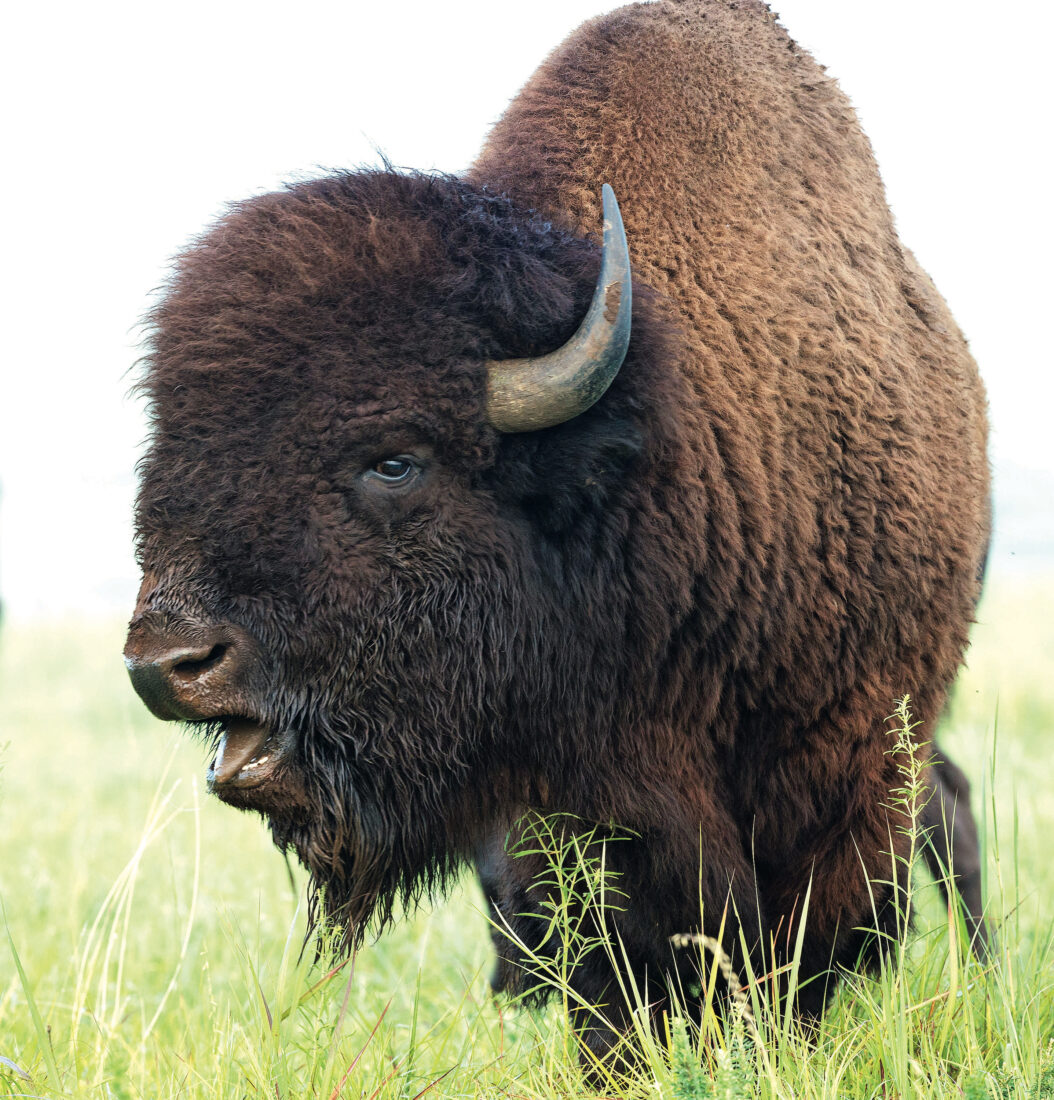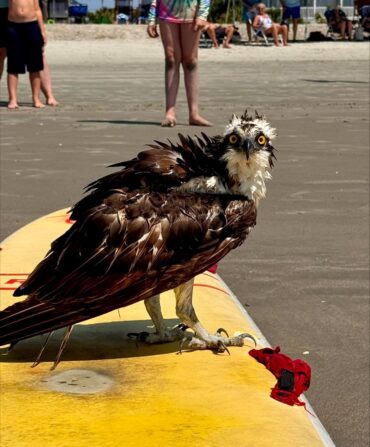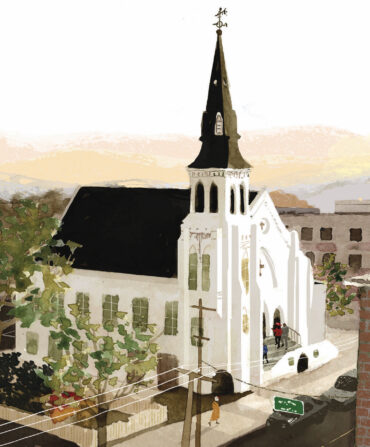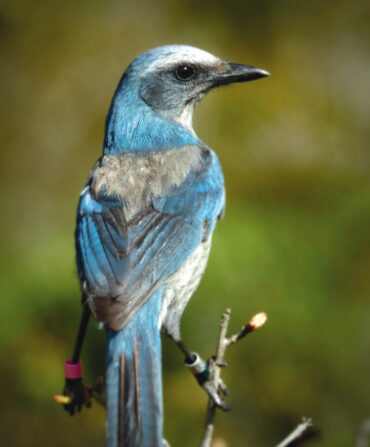Come August in the Osage Hills of Oklahoma, Maximilian sunflowers bloom yellow. Cleansing prescribed fires crackle across grasslands filled with big and little bluestem, Indian grass, and switchgrass. Greater prairie chickens chuckle from the ground; coyotes on the hunt howl. And the rumbles of wild American bison echo day and night, as a herd more than two thousand strong engages in the rituals that will perpetuate their kind—all of it a scene that came perilously close to flickering out.
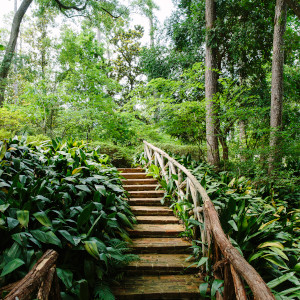
The historical range of the American bison (sometimes called buffalo), the largest land animal in the Western Hemisphere, once touched every present-day Southern state, and herds traversed the prairies left by retreating glaciers in unthinkable abundance—an estimated sixty million—following new growth that flourished after fires started by lightning strikes or Native Americans. Ten thousand years later, Europeans arrived and slaughtered that bounty, destroying a way of life for the tribes that had evolved alongside, relied upon, and deeply revered the animals. By the late 1800s, fewer than a thousand bison remained.
Thanks to a last-ditch effort by early conservationists and Native tribes, bison narrowly survived the bottleneck, and today, after a decades-long push, one of the largest herds in the country roams the Nature Conservancy’s Joseph H. Williams Tallgrass Prairie Preserve, covering 39,650 acres in Northeast Oklahoma. “To get an ecosystem functioning as it used to, you have to put it back under the forces of nature that created it in the first place,” says Bob Hamilton, the preserve’s current director. That began in 1993, when Hamilton and Harvey Payne, the first director, spearheaded burn regimens and introduced three hundred bison donated by a private ranching family. Thirty years of research then ensued to figure out how fire and bison shape the ecosystem, and how to burn and manage ranchland in ways that help cattle keep the prairie diverse when bison aren’t present.
The preserve now burns a third of the bison’s space throughout the year, and once fresh vegetation sprouts, the bovines flock to eat up the nutrient-rich shoots, leaving other patches to thrive. A tallgrass prairie with bison is a shifting mosaic of those patches, each of which harbors its own suite of species. Henslow’s sparrows nest on the ground in overgrown thickets; upland sandpipers prefer newer growth. “This crazy quilt, historically with patches from the size of your living room up to the size of Kansas, supported the plants and wildlife of the Great Plains,” Hamilton explains.
Bison behavior diversifies the landscape even further. When a two-thousand-pound animal takes a dust bath, the wallow forms a miniature pond that can fill with rainwater, creating a wetland where moisture-loving plants pop up and frogs come to breed. A bison dung pad supports more than a hundred insect species. Chunks of spring-shed bison hair provide prime nesting material for birds and mice. The preserve showcases 750 plant, 250 bird, and eighty mammal species reaping those bison benefits.
The revival is starting to play out elsewhere, too. Last year, the InterTribal Buffalo Council marked thirty years of distributing bison to tribal lands; in 2022, the Tallgrass Prairie Preserve donated two hundred of its herd to the council and will do so again this year. Osage Nation, located in the same county as the preserve, started a herd in 2016, and in turn, the council allocated it fifty-four more bison last year, boosting its number to two hundred. “Traditionally, Osage people undertook a fall and a spring hunt for bison, and we used them for everything,” says Jann Hayman, the Nation’s secretary of natural resources. “It’s so moving to see them on our landscape again and know that we’re reengaging with this piece of our cultural heritage that was lost.”
This past spring, the federal government pledged more than $25 million to further aid bison restoration. About eighty tribes in twenty states are currently cultivating their own herds on a million acres of tribal land. And the Nature Conservancy plans to continue to knit together a large portion of the remaining grasslands in the Osage Hills of Oklahoma and the Flint Hills of Kansas, protecting some of the world’s last swaths of tallgrass prairie—and exporting the methodology of the preserve that started it all.
Harvey Payne recalls growing up on an Oklahoma ranch and riding horseback into the hills to survey the grasslands below. “I’d look at the old wallows and let my mind wander, wondering what this country could have looked like back when bison covered the landscape,” he says. “Now seeing that here at the Tallgrass Prairie Preserve is like rolling back the clock and recapturing something that we came so close to losing forever.”


